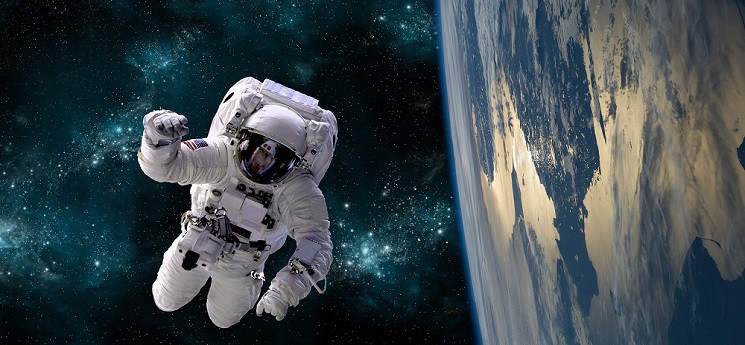Inside Angle
From 3M Health Information Systems
AI Talk: NASA and telemedicine
This week’s AI Talk…
Recently, I attended the annual American Telehealth Association conference. If there is one thing I am happy about concerning the current health emergency, it is the fact that all conferences have gone virtual! I can just walk into my home office room and login to the virtual conference and watch any panel or presentation. My only gripe with the conference organizers is that they provide access to on-demand videos, but there is no provision to speed up the playback (I typically like to use twice the speed for anything that is informational and not entertainment). Oh well, you can’t have everything.
Back to the conference—I was intrigued by a panel on NASA and telemedicine, title Reach for the Stars in Remote Health. The panelists Drs. Aenor Sawyer, Dorit Donoviel and Erik Antonsen are all affiliated with the Translational Research Institute for Space Health, a NASA funded consortium to investigate technologies and solutions that can be applied to spaceflight.(2)
The saying “Necessity is the mother of invention” is appropriate for NASA, as the government agency has had to contend with taking care of astronauts literally at astronomical distances! One could probably say it is tele-tele-medicine! And they cannot always rely on anything that is real time and must work for the most part asynchronously. Turns out NASA has been working on telemedicine for over six decades as they simply did not have any other choice. So, what did they do and how has it impacted this field?
The panelists provided some interesting insights, replete with their own acronyms, such as A2A: Augmented to Autonomous, which essentially means how to go from augmented intelligence to autonomous systems that can help with providing care to astronauts. MATTA data is data that actually matters in providing care! Some of the technologies NASA is investigating include:
- Microbiome for optimized care
- Miniaturized all-in-one ophthalmic monitoring
- Standalone medical decision making [that does not rely on cloud or internet]
An interesting example they discussed revolved around a problem: How to treat astronauts who developed kidney stones. Now, the treatment available a few decades ago was surgery. Clearly not a feasible solution in space, even if you happen to have a surgeon flying around the space station! The search for a solution led to the use of ultrasound to break up the stone. Now, this treatment is widely available to those among us who still inhabit the terrestrial world!
Telemonitoring is a key strategy for NASA. Basically, they monitor all the biometric data of each astronaut and raise an alarm as soon as some data point deviates from normal baseline. We call this remote monitoring and it is now enabled by a variety of wearable devices for tracking one’s wellness at home.
The conference panel’s deliberations got me curious: What other spinoffs are the result of the NASA telemedicine program? Googling pointed me to a website where NASA documents its journey in this area. An unpronounceable acronym confirmed the remote monitoring program was established by NASA in 1964: IMBLMS! It stands for Integrated Medical and Behavioral and Measurement Systems.
To implement telemedicine in rural areas, one can set up a remote outpost equipped with various devices and a nurse or a technician can then facilitate televisits between the patients and the remote doctors. This particular mode of implementing televisits was pioneered by NASA in the 1970s. They implemented a telemedicine infrastructure to provide health services to an Indian reservation in Arizona. The lessons learned were then applied to provide health services to regions impacted by natural disaster globally. The moniker used to deploy telemedicine services in these disaster scenarios had a nice ring to it: Spacebridge!
Fast forward to current times and NASA is actively involved in applying telemedicine to ensure astronauts embarking on long space missions, including potentially trips to Mars, are well taken care of. The Translational Research Institute is at the forefront of this effort. Fascinating.
I am always looking for feedback and if you would like me to cover a story, please let me know. “See something, say something!” Leave me a comment below or ask a question on my blogger profile page.
V. “Juggy” Jagannathan, PhD, is Director of Research for 3M M*Modal and is an AI Evangelist with four decades of experience in AI and Computer Science research.



